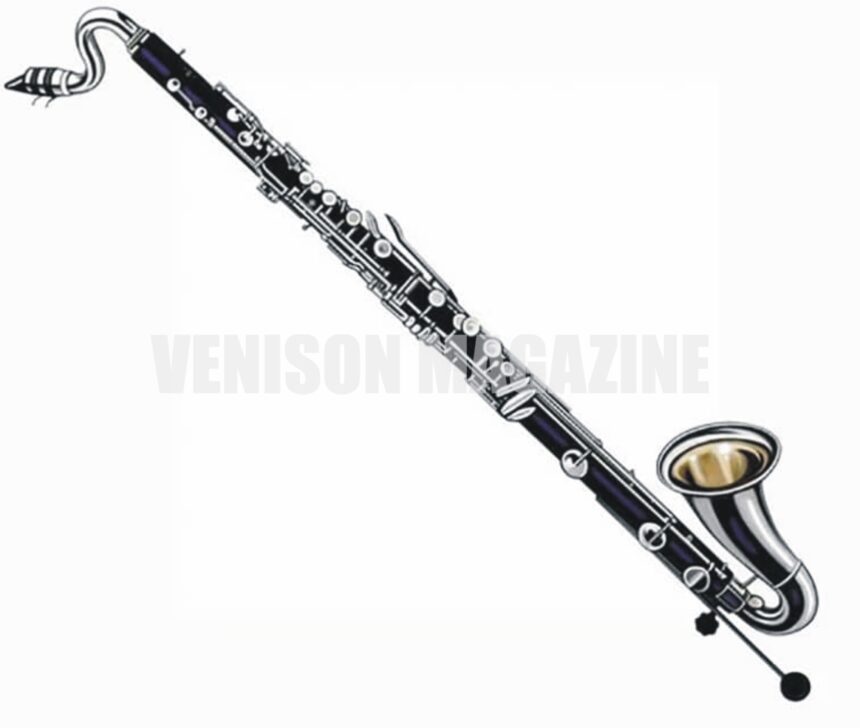Introduction to the Bass Clarinet
The bass clarinet is a captivating instrument that stands out in both orchestras and solo performances.
Its rich, warm tones can evoke deep emotions, making it an essential part of many musical genres.
If you’re curious about this unique woodwind or considering picking one up for the first time, you’re in the right place!
This guide will take you through everything you need to know as a beginner, from understanding its parts to mastering basic techniques.
Whether you’re drawn to its sound or looking to enhance your musical skills, playing the bass clarinet offers limitless possibilities for creativity and expression.
Let’s dive into the world of this remarkable instrument together!
Parts of a Bass Clarinet
The bass clarinet is a fascinating instrument with several distinct parts, each playing a crucial role in sound production.
At the top, you have the mouthpiece. This is where your journey begins as you create sound through your embouchure and breath control. Attached to it is the barrel, which helps shape the tone.
Moving down, you’ll find the upper joint and lower joint sections. These connect together and house many of the keys that allow for different notes.
There’s the bell at the bottom. It acts as an amplifier for sound waves produced within the instrument, giving depth to its rich tones.
Understanding these components can enhance your playing experience by allowing you to appreciate how they contribute to music-making. Each part works harmoniously together to produce that distinctive bass clarinet voice loved by many musicians around the world.
How to Assemble and Care for Your Instrument
Assembling your bass clarinet can seem daunting, but with practice, it becomes second nature. Start by laying out all the parts on a soft surface to avoid scratches. Begin with the bell and work your way up, attaching each section carefully.
Hold each joint firmly while twisting them together gently. Avoid excessive force to prevent damage. Once assembled, check that all keys move freely.
Caring for your instrument is just as crucial as assembly. Regularly clean the inside using a swab after every playing session to remove moisture and debris.
Use a soft cloth to wipe down the exterior surfaces too; this maintains its shine and prevents tarnishing of metal parts.
Store your bass clarinet in its case when not in use. This protects it from dust and accidental knocks, prolonging its life significantly. Remember: proper care leads to better sound quality!
Understanding the Fingering System
The fingering system of the bass clarinet can seem complex at first glance. However, once you grasp its basics, it becomes an essential tool for making music.
Each note corresponds to a specific finger position. You’ll find that several notes share similar fingerings, which allows for smoother transitions between them.
Start by familiarizing yourself with the instrument’s range. The bass clarinet plays both in the treble and bass clefs, so knowing where each note sits is crucial.
Practice scales regularly to build muscle memory. This will help reinforce your understanding of how different fingerings affect pitch and tone quality.
Don’t hesitate to refer to fingering charts or apps designed specifically for the bass clarinet. They provide visual aids that simplify learning tricky passages.
As you progress, remember that consistency in your finger placement leads directly to more precise playing.
Basic Techniques and Exercises for Playing the Bass Clarinet
To start your journey with the bass clarinet, mastering basic techniques is essential. Begin by focusing on long tones. This exercise helps develop your breath control and embouchure strength. Choose a comfortable note and hold it steadily for as long as you can.
Next, practice scales. Start with simple major scales, playing slowly to ensure accuracy. Gradually increase speed while maintaining clarity in each note.
Articulation is another key area to work on. Try tongueing exercises where you alternate between staccato and legato notes. This will enhance your phrasing skills.
Don’t overlook dynamics! Experiment with soft (piano) and loud (forte) passages in your practice sessions; this adds expression to your playing.
Incorporate rhythmic exercises using metronomes or backing tracks to improve timing and groove awareness. Regularly challenge yourself with these basics for steady progress in becoming a proficient bass clarinet player.
Tips for Improving Your Sound and Technique
To enhance your sound on the bass clarinet, focus on breath control. Deep breathing from the diaphragm can significantly improve projection and tone quality. Practice inhaling slowly and exhaling steadily while producing a note.
Experiment with embouchure adjustments. A relaxed jaw and firm corners of the mouth help create a clearer sound. Try different positions to discover what works best for you.
Regular long tones are essential. Pick a comfortable pitch and sustain it for as long as possible, gradually increasing volume before tapering off. This builds both endurance and tonal consistency.
Listening is crucial too; spend time analyzing recordings of skilled bass clarinetists. Pay attention to their techniques, phrasing, and dynamics to inspire your practice sessions.
Don’t shy away from recording yourself during practice. Playback reveals nuances in sound that may not be obvious while playing, allowing targeted improvements in technique.
Choosing the Right Mouthpiece and Reeds
Choosing the right mouthpiece and reeds is essential for achieving a great sound on the bass clarinet. Each player’s style and preference vary, so it’s crucial to experiment with different options.
Start with the mouthpiece. The material, shape, and tip opening can significantly impact your tone. A harder rubber mouthpiece usually provides more projection, while softer materials offer warmth.
Next, consider reeds. They come in various strengths and cuts that affect response and flexibility. Beginners might find it helpful to start with a medium-strength reed before trying others.
Test several combinations to find what feels comfortable for you. Don’t hesitate to ask experienced players or instructors for guidance—they often have valuable insights based on their own experiences.
Remember that consistency matters too; regularly replace worn-out reeds to maintain sound quality throughout your practice sessions. Happy playing!
Common Mistakes to Avoid
Many beginners make the mistake of not maintaining their bass clarinet properly. Neglecting regular cleaning and care can lead to long-term damage.
Another common issue is poor posture while playing. Slouching or holding the instrument incorrectly can hinder your sound quality and technique.
Some newcomers also rush through learning basic notes and rhythms. It’s essential to master the fundamentals before moving on to more complex pieces.
Additionally, relying too heavily on fingerings without understanding musical context can limit your growth as a musician. Try to connect what you play with music theory for deeper comprehension.
Don’t forget about ear training! Ignoring this aspect might result in difficulty tuning or blending with other instruments during ensemble practice.
Resources for Further Learning
Exploring the world of bass clarinet offers endless opportunities for growth. A great starting point is online platforms like YouTube, where talented musicians share tutorials and performances that can inspire your practice.
Books specifically designed for bass clarinetists are invaluable. Titles such as “The Complete Bass Clarinet” provide essential exercises and insights into technique and repertoire.
Consider joining forums or social media groups dedicated to woodwind instruments. Engaging with fellow players opens doors to advice, tips, and shared experiences.
Local music schools often offer workshops or masterclasses. Participating in these events connects you with instructors who specialize in bass clarinet techniques.
Don’t overlook the power of private lessons. Finding a qualified teacher can dramatically elevate your skills through personalized feedback tailored to your needs.
Conclusion
The bass clarinet is a fascinating instrument that opens up a world of musical possibilities. By mastering its parts, understanding the fingering system, and practicing essential techniques, you can unlock your potential as a musician. Remember to care for your instrument properly and choose the right mouthpiece and reeds to enhance your sound.
As you embark on this journey, keep an eye out for common mistakes that beginners often make. Learning from these missteps will help you grow faster as a player. Utilize available resources for further learning—books, online tutorials, or even local music teachers can provide invaluable insights.
Every step you take in playing the bass clarinet brings new challenges and rewards. Embrace them with enthusiasm! Whether you’re joining an ensemble or simply exploring solo pieces at home, enjoy every moment spent making music with this unique instrument. Your dedication will pay off as you develop your skills and find joy in creating beautiful sounds.





